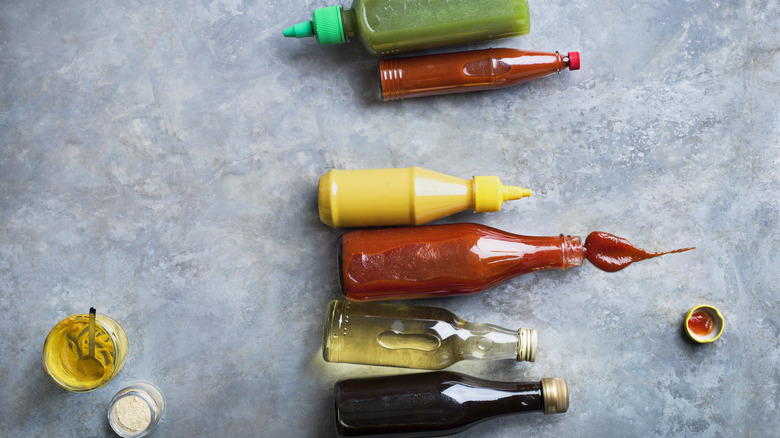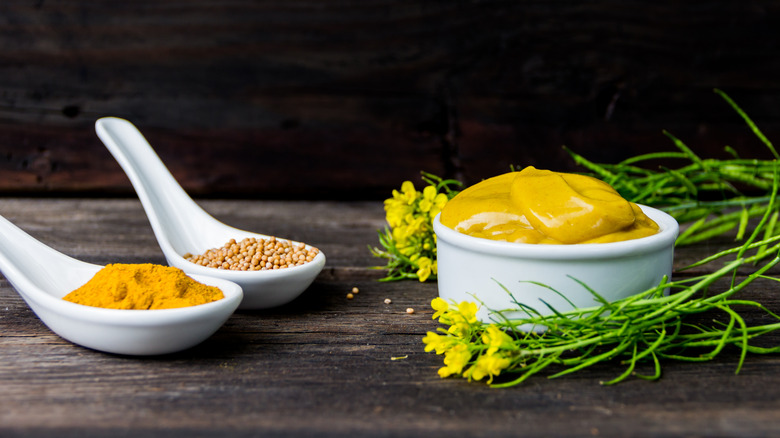The Popular Condiment With The Longest Refrigerator Shelf Life
Of all the sections of the refrigerator, the condiment shelf is likely the most neglected when it comes to getting a good purge. There's probably at least one dressing or sauce in most home cooks' fridges that has long been abandoned — so long, there's no way to remember when it was actually first opened. Most condiments in that state should be tossed, but in mustard, you've got a beloved spread that not only has a protracted shelf life but is also remarkably resistant to spoilage even after it's been opened.
Mustard outlasts other condiments thanks to its tight list of ingredients — typically vinegar, salt, and mustard seeds (that also have antibacterial properties) — which are all less susceptible to quick deterioration. The spread is additionally highly acidic when compared to, say, mayonnaise or cream-based salad dressings, inhibiting the growth of pathogens. According to the U.S. Department of Agriculture, mustard is good for up to one year after the bottle is cracked open, whereas ketchup should be thrown out after six months, horseradish after three to four months, and chutney after one to two months.
The marathon condiment
Government guidelines and best-by dates on the packaging are certainly helpful, but always trust your senses when it comes to evaluating freshness, even for a marathon condiment like mustard. Any changes in aroma, texture, or color can serve as clues that the paste has gone bad. For instance, if it's taken on a sour smell, developed a thicker or crusty consistency, or acquired a darkened hue, it's time to toss. Also, be sure to check for mold if you've been hanging onto an opened bottle for a while. Beyond that, it's worth paying attention to mustard's expiration stamp before you've even taken it home.
When buying mustard that might be close to expiration, make sure the date is at least six months out — this helps guarantee that the mustard seeds are still piquant because they will lose their zip over time.
Finally, consumers can help extend the life of mustard by storing it properly. Keep unopened jars and bottles in a cool, dark place like a pantry. Once those safety seals are breached, minimize the amount of time your mustard spends unrefrigerated; in other words, don't let it languish on the countertop while you eat the sandwich you just made. Avoid cross-contamination by either using a clean utensil to dip into the container or simply opt for squirt bottles. And if you're looking for creative ways to utilize the remnants at the bottom of the package, here are 15 suggestions that put leftover mustard to work in everything from scrambled eggs to even lemonade.

